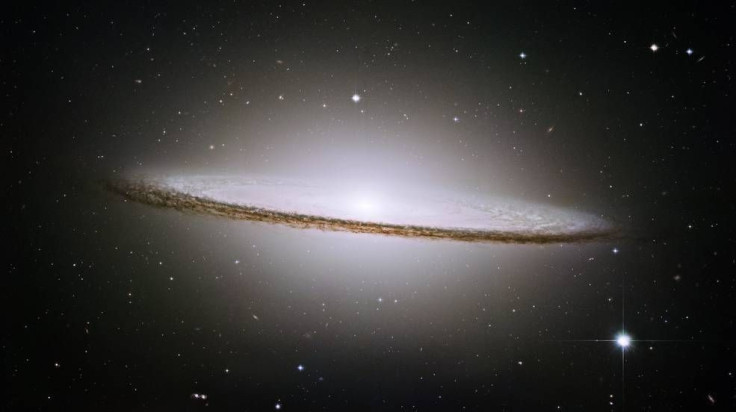Mesmerizing Hubble Image Shows Edge-On Galaxy Hinting At Universe’s Expansion

KEY POINTS
- NASA's Hubble Space Telescope was able to photograph an edge-on galaxy
- Messier 104 contains thousands of globular clusters
- The galaxy shows the universe's expansion
NASA shared a stunning photo taken by the Hubble Space Telescope of a distant edge-on galaxy. Through previous observations, this galaxy helped prove the galaxy’s expansion.
The galaxy photographed by Hubble was classified as an edge-on galaxy due to how it appears from Earth’s perspective. Since the galaxy is not directly facing the planet, it can only be observed from its side.
The galaxy in Hubble’s photo is known as Messier 104. It is also referred to as the Sombrero Galaxy because its appearance resembles the brim of a traditional Mexican hat.
Messier 104 lies within the Virgo constellation and is located about 31.1 million light-years from Earth’s neighborhood. According to NASA, the entire galaxy measures about 49,000 light-years wide, which is around 30% the size of Milky Way. Inhabiting the center of this gigantic galaxy is a supermassive black hole with one billion solar masses.
Through detailed observations carried out by Hubble, NASA was able to get a glimpse of Messier 104’s interior. They discovered that the galaxy is teeming with globular clusters, which are basically spherical collections of stars orbiting a galactic center.
According to NASA, the globular clusters in Messier 104 are about the same age as those in Milky Way.
“Hubble easily resolves the Sombrero galaxy’s rich system of globular clusters, estimated to be nearly 2,000 in number — 10 times more than the number of globular clusters in our Milky Way galaxy,” the agency explained in a statement. “The ages of the clusters are similar to those in the Milky Way, ranging from 10-13 billion years old.”
During the 19th century, it was initially thought that Messier 104 was just a disk of luminous gas surrounding a bright young star. However, through follow-up observations, American astronomer Vesto Melvin Slipher discovered that the massive cosmic structure was moving away from Milky Way at an incredible speed.
Aside from indicating that it was a galaxy, Messier 104’s movement also showed that the universe itself was expanding.
“In 1912, astronomer V. M. Slipher discovered that the hat-like object appeared to be rushing away from us at 700 miles per second,” NASA stated. “This enormous velocity offered some of the earliest clues that the Sombrero was really another galaxy, and that the universe was expanding in all directions.”
© Copyright IBTimes 2024. All rights reserved.





















